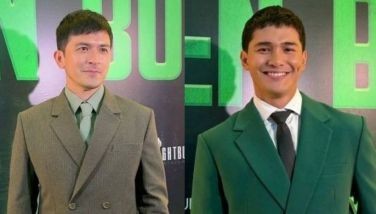Study of natural history made interesting
One morning at The Fort, we got interested in the long line of students entering a flying saucer-like building called The Mind Museum, and followed to have the best three hours we had ever spent inside a Science Museum here or abroad.
We entered the Nature’s Hourglass, a theater with a sign that reads Ang Simula. There were no chairs so everyone sat on the raised platform, then the lights dimmed and the film began. As the narration started, we were introduced to the billions of years that led to today and a boy on the beach (played by Nash Aguas) holding a turtle.
The narration continued, “Countless life forms have thrived on this planet long before the first humans appeared. One is still found…the green Sea turtle, lovingly called the pawikan.”
The video moved quickly to Planet Earth 250 to 150 million years ago and super continent Pangea that split into Laurasia and Gondwanaland on which roamed Dinosaurs, to 65 to 57 million years ago when a massive meteor fell that shifted the axis of the planet causing the dinosaurs to perish, earthquakes and volcanoes creating the Pacific Ring of Fire.
As a block broke away forming Palawan, now the oldest part of the Philippine archipelago, other blocks drifted and clashed giving birth to the Philippine Fault that divided the whole archipelago, as islands emerged and volcanic terrains formed all over the country.
“As the earth’s turbulent climate stabilized, the stage was now set for the rise of man’s earliest ancestors…and the hardy pawikan was there to witness it all! There is a theory that the continents are moving back to form one giant super continent once again — perhaps a second Pangea… But for now, it’s still a theory… Will the tough and enduring pawikan still be walking the planet by then? Who knows?”
There was wild unbroken applause from the students! We had never yet experienced such reaction to a six-minute documentary and the four-minute story of its making that followed. The decision of ABS-CBN to accept the proposal of Bonifacio Art Foundation (BAFI), owners of The Mind Museum, has been tremendously appreciated.
It was in June 2009 that BAFI approached ABS with a proposal to sponsor the construction of the Nature’s Hourglass and produce the films Ang Simula and The Making of Simula. At that time, the Mind Museum had already started production on The Birthplace, also shown at the theater. Since the Lopez family are into youth education through the Knowledge Channel and other ventures, they decided to accept the proposal. Leo Katigbak, sitting as head for special projects, told us that they decided on Chito Roño as director for his cutting-edge approach and experimental nature, as well as his experience in filmmaking to bring a holistic balance to the project.
This was actually what attracted us to Ang Simula. It combined mainstream entertainment with science and natural history lessons, a difficult chore indeed, and all these in six minutes. We loved the use of the pawikan and Nash with whom student viewers could identify. Joonee Gamboa as narrator was also a brilliant touch.
At the moment, it is only at the Mind Museum that one can watch the film. BAFI and ABS jointly own the rights, title and copyright, but ABS owns broadcast rights in the Philippines and abroad. We can soon see the film being sent to festivals all over the world.
As we went around The Mind Museum, we found three main galleries dedicated to Atom, Life, Earth and Universe. Ang Simula belongs to the Earth Gallery and seems to be the first place where students visit before they are brought around the place.
It took two years to produce the films due to the research involved. There were at least 30 revisions on the script with six people doing the writing, declared Leo. It was not a simple film to put together what with the animation, stereoscopic 3D and live footage. Animation and special effects were by Ambientmedia and RS Video, both based in the Philippines. People from top to bottom involved themselves, from chair/CEO Eugenio Lopez III, president/COO Charo Santos-Concio, overall head of production Ginny Ocampo, director of photography Neil Daza, location manager Jacqueline Papica, head of customer marketing Teresita Villareal and numerous others.
Philippine scenery, indigenous plants and animals were shot at Ninoy Aquino Parks and Wildlife, Pawikan Conservation in Morong, Tamaraw Conservation in Mindoro, Subic and many other places.
Students and parents surveyed from Oct. 14 to 23 had stated: “Very educational and different,” “Now I know how the Philippines was formed,” “I love the 3D effects,” “The flow of the story is clear,” “I like everything in the film,” etc. For inquiries on the Mind Museum, call 909-6463.
(E-mail the author at [email protected].)
- Latest
- Trending






























